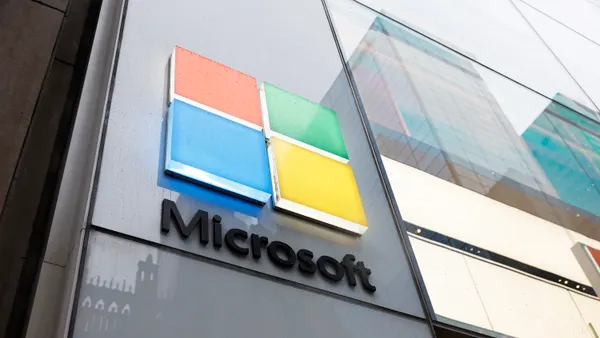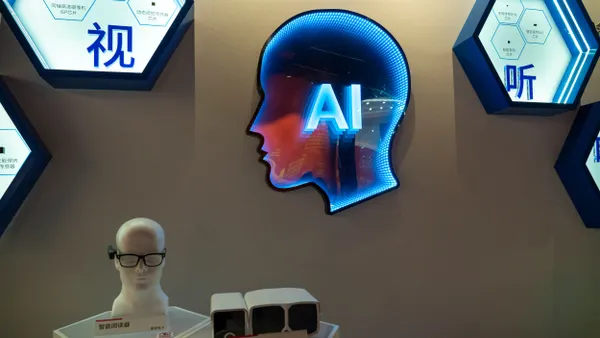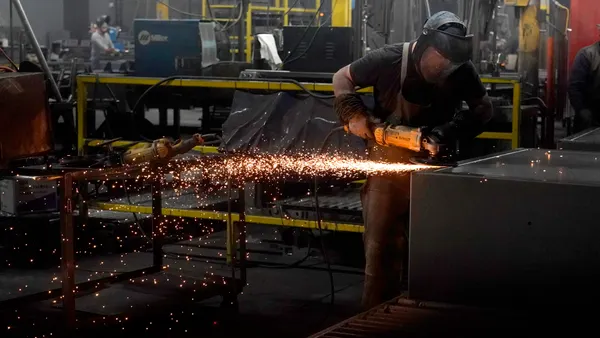While the workplace has been evolving for years, the global pandemic radically accelerated workplace trends that were long overdue. In this new environment, data shows that one of the most significant trends valued by top talent is increased transparency and communication.
Since March 2020, companies have had to face many changing circumstances and unknowns, and they've had to answer their team's questions about them too. From furloughs, to return to office strategies to vaccination requirements, the inquiries from employees at every level of the organization have grown week to week.
Companies had to learn how to effectively communicate to keep teams united and informed, even when they didn't have answers yet. One study during the pandemic even found that 90% of people said they wanted at least weekly communication from their company.
What's critical for leaders to understand about transparency is that this workplace trend is not a reaction to the global pandemic — it's here to stay. We've officially departed away from more traditional communication styles, like communicating on a "need to know" basis or with a top-down hierarchy, and we've moved into candid communication with your employees.
Companies that get on board with this trend will be rewarded with attracting and retaining top talent. Companies that lag in adopting more transparency will lose top talent to other companies that do. To ensure your company doesn't fall into the latter, we've identified four sustainable strategies to boost transparency at your company.
Enhance your hybrid culture with hybrid communication
If you think about it, the workplace has always been semi hybrid — and communication has long needed an upgrade.
Maybe you once worked at a company where one floor or part of the office was often left out of things. Or perhaps you worked at a company that merged with another and had to blend communication styles. If you're nodding your head, you likely also remember how disjointed communication affected the culture.
"Open communication is a key part of effective workplace culture — and data backs this up," explains Nick Schacht, the Chief Global Development Officer at SHRM. A recent SHRM survey found that of the Americans who say workplace culture improved since the beginning of the COVID-19 pandemic, 59 percent credit communication.
Your team may not be in one location together anymore, but it's your company's responsibility to ensure that segmented employees don't feel left behind. According to Schacht, there are two critical ways to make sure you're communicating effectively.
The first is reinforcing that you have a hybrid workforce. When in a hybrid situation — such as an all-hands meeting — ensure you invite all employees (regardless of location) to participate, use effective gatekeeping and ensure the environment and technology support this. Secondly, invest the time training your employees on hybrid communication, so everyone is involved and on the same page.
Build trust and invite honest feedback
Trust is a huge component of fostering a transparent company, and a big part of building that trust is giving employees a reason to believe their voices are heard. One way to do this is by inviting feedback through employee engagement surveys and pulse surveys.
"The problem with people not providing feedback on employee engagement surveys and pulse surveys is two bad things — either they don't care, or they don't trust it," explains Schacht. He gives us three ways to counter this:
1. When you ask for information in a survey, pay attention to the information you received and then feed it back to the employees. Identify highlights, opportunities and areas you may need help in.
2. Communicate your intentions and plan of action based on the findings. Let your employees know what they can expect and when.
3. Don't reprimand negative feedback. To get honest feedback, you need to make sure people aren't afraid to provide it. Otherwise, the distrust grows.
Gathering — and following up on — feedback is crucial to fostering a transparent workplace that's built on trust, and it'll help your workplace move forward. "That feedback can help guide future actions, future decisions and future communication," says Schacht.
Create and distribute more consistent policy updates
In a world with constant change, organizations must dial in their documentation practices to ensure clear, consistent communication around workplace policies. "Policy is one of the first things that should have gone digital," notes Schacht, "it needs to be available and visible to everybody."
If that policy change affects employees' lives, it's crucial to communicate the change, why it's changing and the timing. And in the hybrid workforce, you also have to take it one step further by sharing what this change means to each individual — as it may be different depending on their location or other various factors.
As far as logistics go, technology is your greatest ally for communicating these policy updates. From securely sending signing documents via Slack to managing vaccine documentation, the right technology can make it easy for companies to share changes to their policy.
Create more opportunities for open discussion
"Effective communication is spherical, not linear," explains Schacht. To support a workforce where communication is 360 rather than one-way, companies must create more opportunities for open discussion.
If they don't, it could lead to a lack of trust and employee disengagement, which has serious consequences. (For example, if a disengaged employee leaves, it can cost businesses $4,129 on average to hire new talent, according to SHRM.) The good news is, there are many options to increase employee engagement in our new world.
Consider hosting additional "Town Halls" to keep staff in the loop, create moments for informal engagement and have a central communication tool to support mixed-location engagement. And feel free to think outside the box with things like hybrid cooking classes or internal podcasts that bring in employees as guests.
After all, one of the silver linings we can glean from our accelerated workplace changes is all of the new ideas and opportunities to engage with, connect and delight your employees.
Conclusion
The future of the workplace isn't coming; it's already here, and how you communicate will determine your company's position in this new environment. Yes, it has been a bumpy road. And, yes, there's been friction along the way. Still, with the right technology and integrations in place, you can mitigate the logistical challenges to focus on the most important part — your people.
"We have to remember that we're addressing people," Schacht reminds us. "It's not just about processes, not just about structure, it's really about how we connect with people."
Transparently, we think this accelerated change is a good thing.










